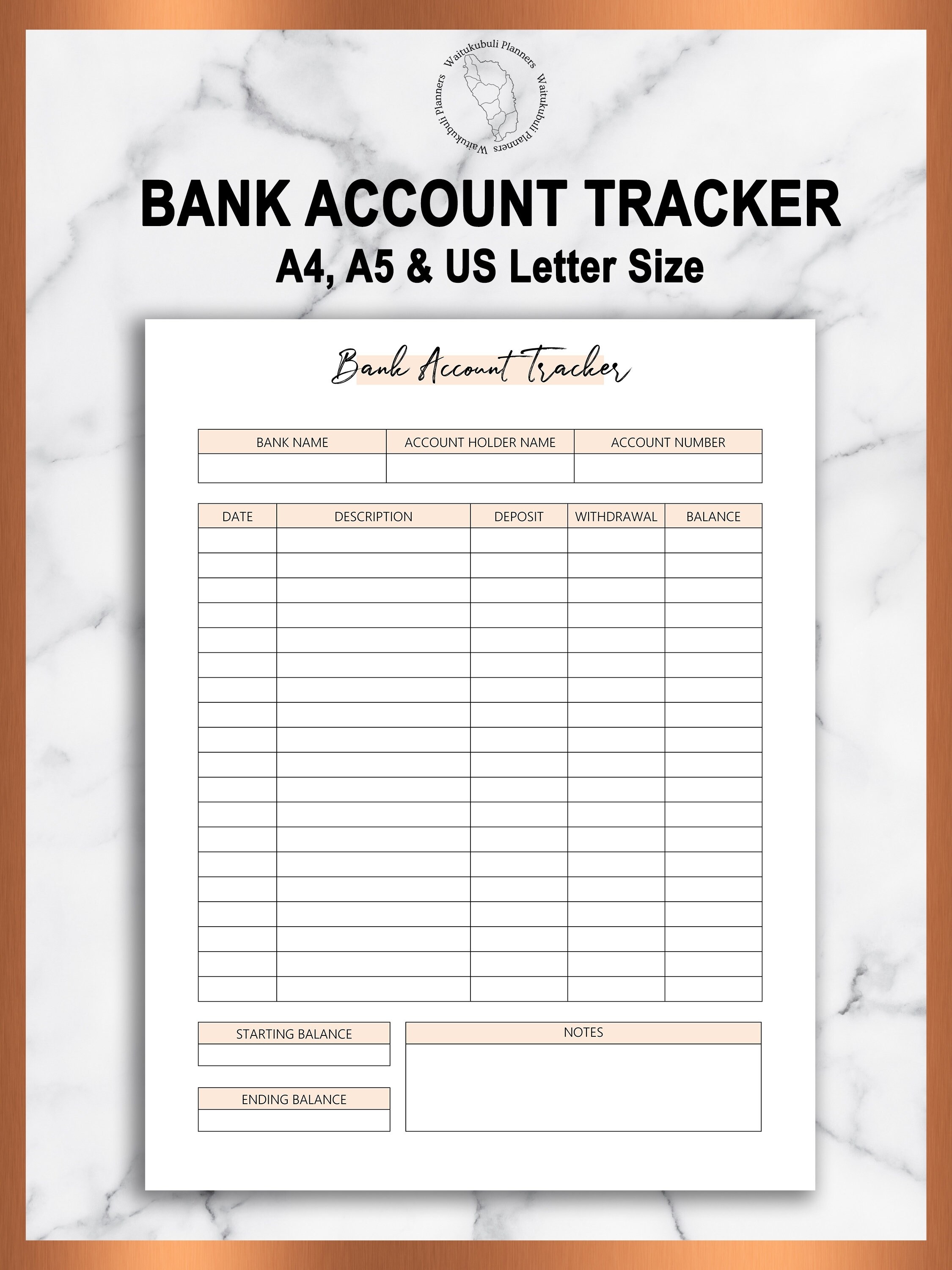

- #Account tracker import from bank software#
- #Account tracker import from bank plus#
- #Account tracker import from bank series#
- #Account tracker import from bank download#

Once you get in the habit of capturing your receipts with a photograph, you can rest assured you won’t miss any of these expenses. In contrast, if you upload the receipt instantly, you don’t have to worry about doing anything in the future. Of course, you can always save the receipts and upload them later, but if you take that route, you spend more time than you need to on this project. If you generate profit-and-loss reports or cash flow statements, for example, your records won’t be as detailed and accurate as they should be. You also compromise the accuracy of your financial records. Little expenses can add up over time, and if you don’t track those expenses, you miss out on valuable tax deductions. You can also snap photos of receipts and upload them automatically using the QuickBooks app.Įven if the expense is small, you still need to track it. You or your authorized employees simply snap a photograph of the receipt, and then these apps automatically upload the information to your QuickBooks accounting software. If you’re paying with cash or using an account that’s not connected to your QuickBooks software, you need tools that can help you record expense receipts on the go.Īpps such as IQBoxy and Nexonia Expenses help you do that. You may buy office supplies on the spur of the moment one day, take a client out for coffee the next day, and incur lots of other big and small expenses as well. When you’re running a business, you often incur a lot of little expenses while you’re on the go. Then, the transactions should be synced automatically. To continue uploading transactions into your cloud-based accounting software, just make sure your banking or credit card account is connected to QuickBooks moving forward.
#Account tracker import from bank software#
Also keep in mind that if the oldest transaction in your file is older than the opening balance date in your QuickBooks account history, the software will automatically change the opening day and balance in your QuickBooks records. If the file you get from your credit card provider is larger than that, try shortening the timeframe and downloading two or more files instead of just one. QuickBooks can accept files up to 350 KB in size.
#Account tracker import from bank series#
Some credit card providers have a series of default fields that you can’t change as well as several fields that you can add if desired.
#Account tracker import from bank download#

Regardless of why you want to import expenses from these accounts, you can typically connect QuickBooks to your online credit card or bank account and automatically upload the last 90 days of transactions. In other situations, you may want to upload banking or credit card statements from previous tax years so you can generate reports comparing this year’s expenses or profits with last year’s numbers. Similarly, if you’re just getting started with QuickBooks and want to upload startup expenses that you incurred in the initial days of running your business, you may also need to upload old transactions. For instance, if you switch to QuickBooks in the middle of an accounting period, you need to upload these old expenses into your records. Sometimes, you may need to upload old credit card or banking transactions into your QuickBooks records.


 0 kommentar(er)
0 kommentar(er)
